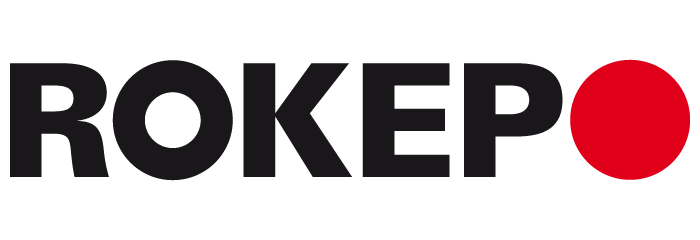Content

The term is also used in biology, to refer to a person’s basic metabolic rate; in rocketry, it refers to the rate at which a rocket is burning fuel; and in chemistry. Additional funding could also help provide more runway for a small business, allowing it to develop and grow for longer without worrying about running out of cash. Finally, businesses can look into other strategies to increase revenue, like subscription services and loyalty programs. Amid the COVID-19 downturn, the majority of startup entrepreneurs indicated they had less than six months of funds left, otherwise known as the “runway red zone.” Burn rate and cash runway are directly related; a higher burn rate will lead to a shorter cash runway, and a lower burn rate will lead to a longer cash runway.
Dividing cash on-hand by the burn rate gives the number of months before the business runs out of cash. As an example, if a company has $100,000 in cash and is spending $10,000 a month, its cash runway is 10 months. After that time, barring corrective action, the company will be out of business.
How to calculate gross burn rate
Burn rate is defined as the negative free cash flow (FCF) during the month. You can calculate this during a specific month, or average out over a longer time period, like three months or one year. Your cash runway tells you how many months you have left before your company runs out of money.
The above image is an e-Commerce financial model showing the company’s cash balance over time. Often, companies spend on marketing in order to achieve growth in their user base or product use. However, start-ups are often constrained, in that they lack the resources to use paid advertising. As such, “growth hacking” is a term often used in start-ups to refer to a growth strategy that does not rely on costly advertising. One example is Airbnb engineers reconfiguring Craigslist in order to redirect traffic from Craigslist onto its own site.
How to improve burn rate
However, all businesses—regardless of their stage in the business life cycle—can benefit from knowing their burn rates. If your company is burning cash, then you are spending more money than you are taking in. Similarly, your company’s burn rate is how much money your business is spending per month (revenue-expenses). If you’re unfamiliar with project how to calculate burn rate burn rates (even more reason to read on!) then in its simplest term a project’s burn rate is the rate at which a project will use up its allocated resources (time and budget). This figure is extremely valuable as not only does it ensure you don’t use up all your resources too soon, but it also lets you know how profitable the project will be.

For example, if a company is said to have a burn rate of $1 million, it would mean that the company is spending $1 million per month. So, if you’re a startup or VC-backed company, you’re probably eager to understand how your burn rate relates to other businesses in your field or industry. Unfortunately, there’s no golden ratio for burn rate vs. cash runway or the amount of money you have in the bank. It doesn’t require a complex formula, like customer lifetime value (CLV) or return on investment (ROI). You just need a firm grasp on how you spend your money and you’re good to go.
Key Takeaways
While it is critical to watch for unusually high spend each month, burn rate isn’t the sole indicator of your company’s financial health. Early-stage startups that recently secured VC funding are likely to have a negative burn rate while they fully develop their product and work through the initial stages of marketing and sales. If a company has any revenue, the operating expenses can be subtracted from revenue to find its operating profit. Net burn rate will be a smaller number than gross burn rate, since revenue is subtracted from the gross burn rate.
- After that time, barring corrective action, the company will be out of business.
- You can also ask customers for upfront or part payment before you complete a job or delivery in order to protect yourself against non-payment and ensure you have plenty of cash to cover your overheads.
- And if you’re running a startup, you’re almost certainly overspending somewhere.
- If you’re paying yourself this way, try tightening your waist belt; the less you draw out of your capital accounts each month, the more your business has to work with.
- The resulting figure is how many months you have left before your coffers run dry — assuming constant expenses and revenue and no additional outside investment, of course.
If the burn rate begins to exceed its forecast, or if revenue fails to meet expectations, the usual recourse is to reduce the burn rate, regardless of how much money is in the bank. This requires rethinking the startup’s cost structure and usually means reducing staff and/or other major cost drivers, such as office lease, technology, and marketing. You’ll just need to have the timeframe you want to measure plus the starting cash and ending cash balance for the selected period. For example, you may want to look at the burn rate for the last six months or a particular quarter.
It’s a vital component that will guide how you spend, how you forecast, when you opt to turn to investors, and how you make strategic decisions for your business. If the monthly cash sales were taken into account as well, we would be calculating the “net” variation. Note, that there were no cash inflows in the example above – meaning, this is a pre-revenue start-up with a net burn that is equivalent to the gross burn. An important distinction is how the metric should account for only actual cash inflows/outflows and exclude any non-cash add-backs, i.e. a measurement of “real” cash flow.
- New companies with a low burn rate are more likely to gain traction and become profitable, thus yielding a return on any investments made in the business.
- Here, the burn rate is equal to 1 which means the project budget is being expended in accordance with what was originally planned.
- Novo Platform Inc. strives to provide accurate information but cannot guarantee that this content is correct, complete, or up-to-date.
- This matters because it helps you know exactly how long you can continue running your business without making any significant changes before you run out of money.
- Sugar & Spice Bakery was generously funded by an angel investor and has $50,000 in total cash reserves.
- Typically, burn rate calculates how quickly a company will go through its startup capital before becoming cash flow positive.
- Two of the most important variables that play into most startups’ burn rates are cost of growth and unit economics.
